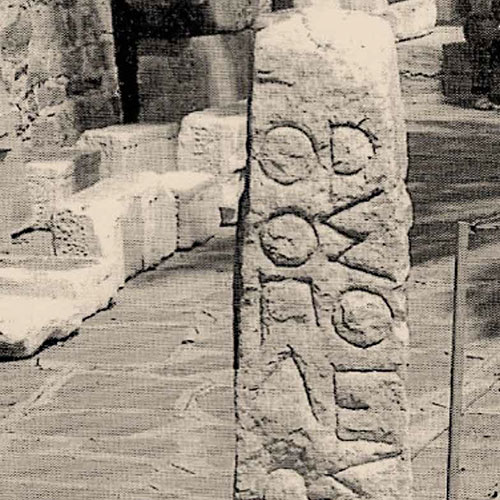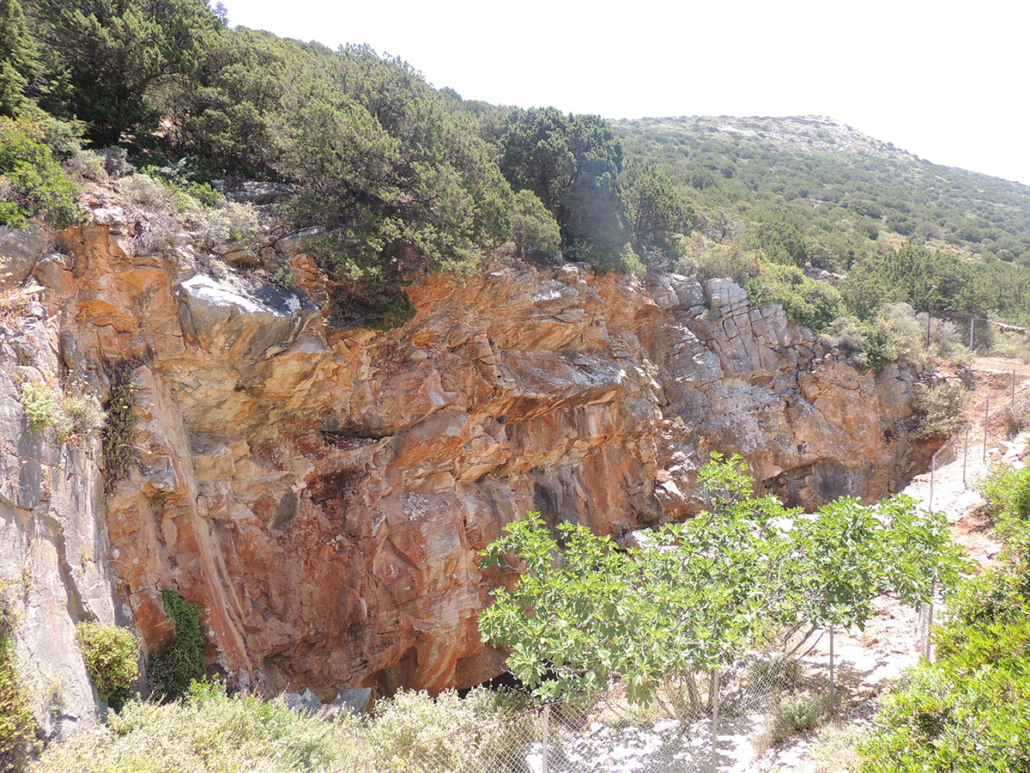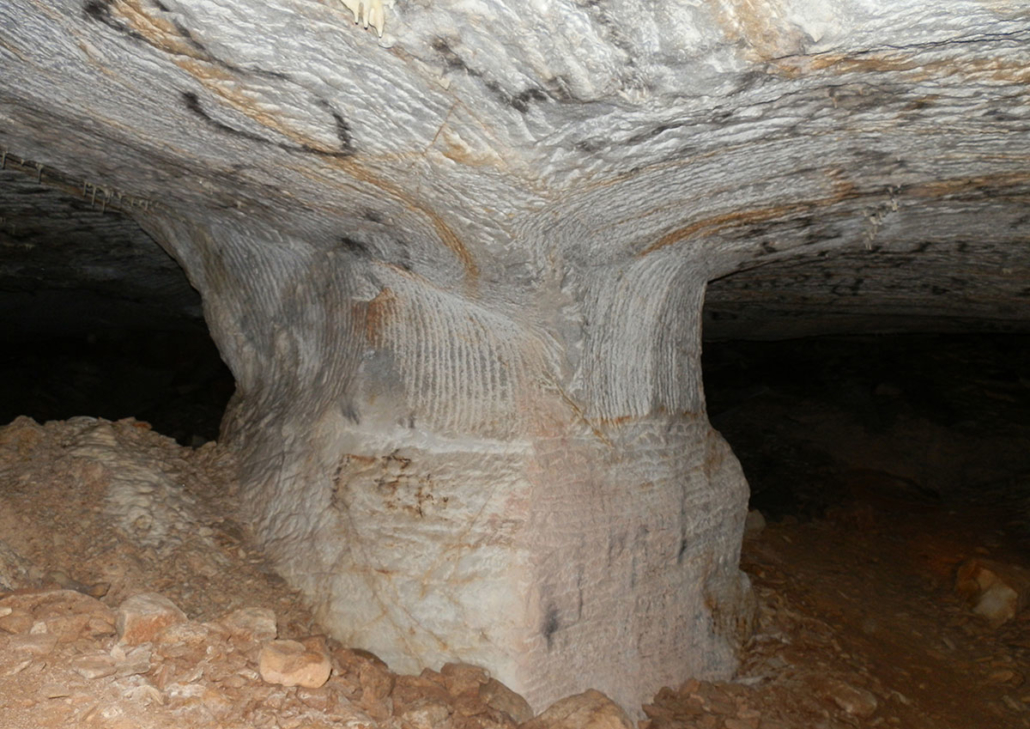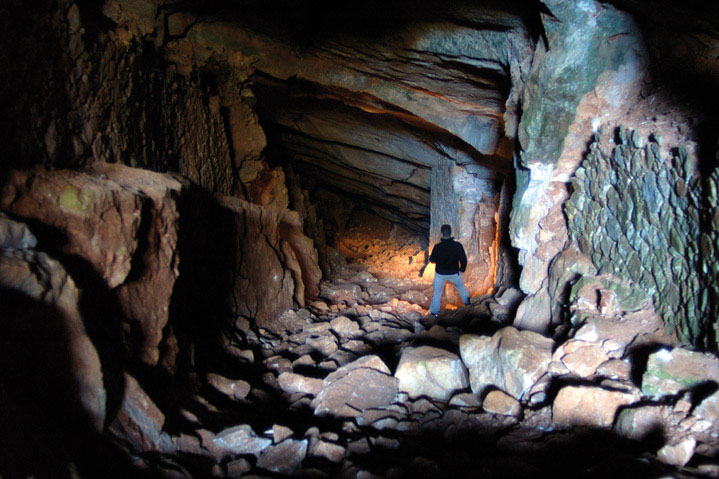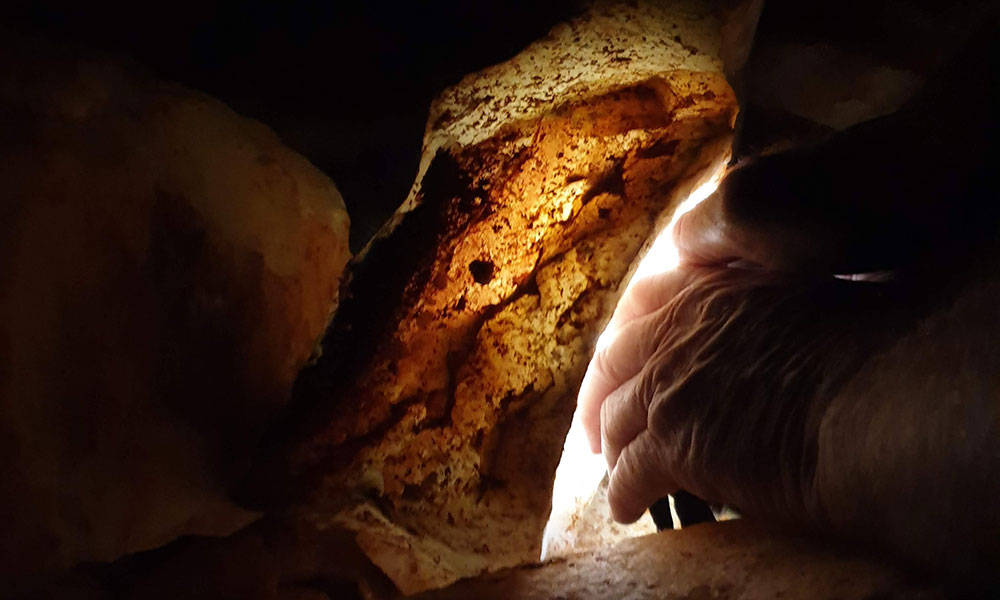In historical times the extraction begins in the 7th century BC, as evidenced by the tombstone (stele) with a representation of a seated female figure in low relief from the cemetery of Parikia, and intensifies from the 6th century BC onwards when the Parian marble was systematically extracted in the form of blocks to be used for sculpture and architecture. The semi-finished objects found in the deposits of chip stones from the ancient extraction in Lakkoi and Spilies, including a stele (column) with the inscription “horos poleos” (marker of the city border), on the one hand, testify to the existence of marble workshops in the area of the quarries and on the other hand, indicate that at least part of the exploitation was probably controlled by the state.
From the quarries of the valley of Skarpathiotis in Marathi originates the most famous variety of Parian marble, the excellent quality lychnitis lithos, sought after for sculpture due to its quality, whiteness, high transparency and light transmittance (3.5 cm against 2.5 cm of the Carrara marble and 1.5 cm of the Pendelikon marble) which, in the best quality material, can reach up to 12 cm! The best quality layer of marble, 1-3 m thick, is found among other thicker bluish layers and is visible in various locations in the valley. Its unveiling is most likely the result of the torrent removing soft top layers, followed by the initial surface extraction, which gradually went deeper to follow the layer, and then continued underground. The marble layers appear strongly folded with an upwards curvature, which determined the method of extraction, applying horizontal, stepped and inclined quarrying, depending on the geology of the area and the exploitation plan. The quarries of Marathi extend – in terms of area – to hundreds of metres by keeping at intervals whole non-extracted masses that act as pillars and with the use of stone piles, that are accumulations of debris and chip stones from the first sorting, which are sometimes held by lateral walls that created communication corridors.
Masterpieces of sculpture (Aristodikos, the Kritios Boy, the Nike of Paionios, the Hermes of Olympia, the Aphrodite of Melos) and of architecture (Treasure of the Sifnians, pediments of the Peisistratian Temple on the Acropolis, pediments of the Temple of Zeus in Olympia, frieze of the Mausoleum of Alikarnassos etc.) were created using Parian marble which decisively shaped the art of ancient Greece and contributed to its spread to the West.
The underground quarries of Marathi, together with the quarries in Lakki, Spilies and Thapsana, are a very important chapter of history, not only of Paros but also of the ancient Greek and Roman world in general, a leading and complex work of geology, technology, history and art, of national and global importance.


